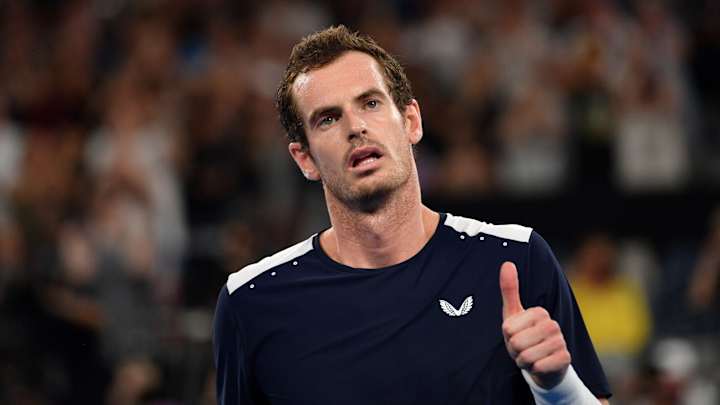Five Thoughts on Day One at the Australian Open

• Officially, this was the first day of the year’s first major. Unofficially, this was Andy Murray Day at the Australian Open, a chance to salute a future Hall of Famer player in what might well be his final match. Murray announced on Friday that his recalcitrant, rebellious body—his hip injury in particular—was making it impossible for him to continue playing much longer. As much a symbolic occasion as anything else, Murray showed up for this first rounder tonight and tried his best. Unfortunately for him, the man on the other side of the net, Spain’s Roberto Bautista Agut was the worst possible opponent, a steady veteran—confidence swollen from having beaten Novak Djokovic last week—whose game is predicated on relentless movement. Murray’s tactical brilliance, his crisp strokes and his fighting spirit were in evidence. So, at times, was his compromised state. He enthralled the crowd, pushing a high-quality match to a fifth set, before Bautsita Agut ultimately prevailed 6-4, 6-4, 6-7, 6-7, 6-2. If this, the 854th match of his career, was in fact the last one, it was a hell of a way to go. Fragile hip, unbreakable spirit.
KAY: Andy Murray's Unabashed Feminism Might Be His Most Admirable Legacy
• Speaking of Hall of Fame players born in the spring of 1987…it’s been 11 years since Maria Sharapova won the title here. A lot has happened to her since, good and less good. But here she is, age 31, still competing. Sharapova is into round two without losing a game. It’s only one match, but it was a gem, a 6-0, 6-0 waxing of Harriet (Dodge) Dart of Great Britain. We all know the maxim, “You can’t win a Slam in week one; you can only lose it.” But you know what else you can do in week one? Wear yourself out. Winning quickly, before the heat gets too oppressive, can pay dividends later.
• Rafael Nadal played his first match since the 2018 U.S. Open and offered a passable impersonation of….Rafael Nadal. Betraying only modest ring rust—or the tennis equivalent—Nadal handled Australian James Duckworth, 6-3, 6-4, 7-5, elevating his game when the situation called for it. "It's not easy to come back after a lot of months, and especially against a player who's super aggressive,” he said afterwards. “I'm very, very happy to be through." Nadal, who had to retire from his previous two hardcourt majors, takes on another Australian next, Matthew Ebden. He coupled his fine play with comedic gold in the press conference.
Nadal, Sharapova, Wozniacki Cruise Into Second Round at Australian Open
• Overall, it was a fine day for the American contingent. Former UVA star Danielle Collins won her first main draw Grand Slam match in dramatic fashion, taking out 14th seed Julia Goerges in a testy three-setter. Her next opponent: countrywoman Sachia Vickery, who also won today. Sloane Stephens looked like the potential No. 1 player she is—no single feat, as 11 (!) different women could finish this event atop the rankings—overcoming a slow start and then rolling fellow American, Taylor Townsend. Seventeen-year-old Amanda Anisimova of New Jersey continued her ascent, winning here for the first time. On the men’s side, as we write this, winners included Mackenzie McDonald, Taylor Fritz, Frances Tiafoe, Denis Kudla, and 6’11” Reilly Opelka, who upset the top-ranked 6’10” American, John Isner, in a match that set a record for cumulative height.
• Murray’s departure will mean that more tournament sub-themes will emerge. They always do. One to watch: the fierce and rampant bureaucratic in-fighting, which is bubbling to the surface. Over the weekend, the ATP players took a Brexit-style vote—remain or leave—on its CEO, Chris Kermode, ultimately deciding to delay the vote. The WTA is increasingly exasperated by feeling like second-class citizens. (Normally cautious, Maria Sharapova spoke openly today about perceived sexism.) The overall warmth generated by this event itself has been chilled a bit by some of Tennis Australia’s cold business relationships, including its stake in both the Laver Cup and the disruptive ATP World Cup. Politicking has already begun for the newly vacant USTA CEO job. Yes, this is business as usual. Dysfunction is as much a part of the sport’s tableau as wristbands and athletic tape. But, like a drama series building to a climax, there is an unmistakable sense that the current level of chaos is unsustainable.
